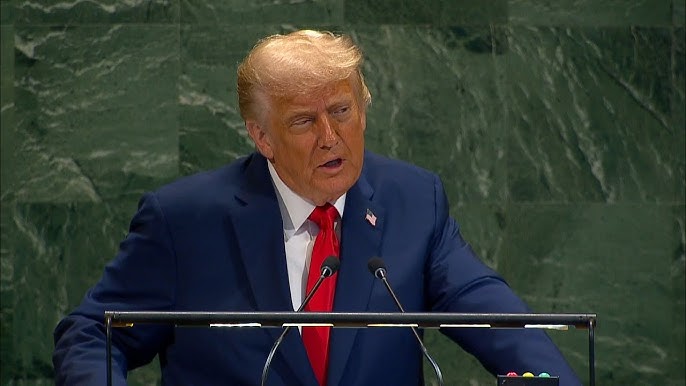Analysis: US companies looking to leave Ireland to return home in the wake of Trump’s tariffs could face an exit tax of up to 33%
Donald Trump’s much touted “Liberation Day” is here and his threats of 20% tariffs on EU goods entering the United States have caused widespread concern and uncertainty. One of the much discussed aspects of this is the possibility of US pharmaceutical companies based in Ireland returning to the US. While Ireland may be a land of warm welcomes, friendly smiles and open hearts, we may be more like Hotel California – “you can check out any time you like, but you can never leave” – when it comes to pharma companies moving business out of Ireland.
From RTÉ Radio 1’s Morning Ireland, Irish pharma exports to US could halve if tariffs applied
More precisely, you can leave, but it will potentially come with an exit tax cost. This a special type of Capital Gains Tax (CGT) charge which could apply at 12.5%, 15% or, in a worst-case scenario, at 33%. This could be triggered on the relocation of valuable Pharmaceutical Intellectual Property (which by their nature are notoriously difficult to value) to the US.
This exit tax regime looked a lot different at the start of the first Trump administration in 2016 and was generally regarded benignly at the time. Roll the clock forward to 2025, the exit tax is fundamentally different in its scope.
For many international groups, the flexibility to move businesses, personnel and assets across borders can be important to react to commercial changes and new opportunities. However, many jurisdictions impose corporate migration or exit charges when valuable assets or businesses are transferred out of their jurisdiction. This is designed to protect tax revenues and avoid artificial transfers of business designed to take advantage of different tax systems, where such transfers are driven by tax outcomes rather than commercial motives.
From RTÉ Six One News, Minister for Finance Paschal Donohoe warns jobs and tax cuts at risks if Trump’s tariffs go ahead
The rationale behind exit taxes imposed by many countries is to retain taxing rights over unrealised gains which have accrued whilst a company is tax resident in a particular country. In the absence of an exit tax, a company could otherwise move its tax residence to a low/no tax jurisdiction prior to the sale of an asset and therefore mitigate any potential taxable gain that would otherwise arise.
The exit tax regime in Ireland has undergone changes to comply with the EU’s first Anti-Tax Avoidance Directive (ATAD 1), which is designed to target corporate taxpayers in the EU with cross-border operations. Its stated objective is to provide for the effective and swift coordinated implementation of anti-base erosion and profit shifting measures at EU level.
The ATAD 1 comprises of five operative components: interest limitation rules, controlled foreign company (CFC) rules, exit tax, general anti-abuse rule (GAAR) and anti-hybrid rules. All these provisions feature as part of Ireland’s suite of tax provisions, which impact all Foreign Direct Investors into Ireland.
From RTÉ Radio 1’s Drivetime, how should the Government react to respond to Trump’s tariffs?
Article 5 of ATAD 1 contains the EU legislative provisions in connection with exit taxes. The preamble to the ATAD 1 explains that exit taxes “have the function of ensuring that where a taxpayer moves assets or its tax residence out of the tax jurisdiction of a State, that State taxes the economic value of any capital gain created in its territory even though that gain has not yet been realised at the time of the exit. It is therefore necessary to specify cases in which taxpayers are subject to exit tax rules and taxed on unrealised capital gains which have been built in their transferred assets.”
These rules apply where any of the following events occur: an Irish resident company migrates its tax residence to another country; a company transfers assets from its permanent establishment in Ireland to its head office or permanent establishment in another country; or a company transfers a business carried on by its permanent establishment in Ireland to another country.
Subject to certain anti-avoidance rules (which may impose a 33% capital gains tax charge), the tax rate applicable to any chargeable gain arising is 12.5%. Multinationals within scope will have to consider the impact of the 15% minimum tax rate on such gains.
From RTÉ Six One News, European Commission president Ursula von der Leyen says the EU has ‘strong plan to retaliate’ at Trump’s tariffs if needed
Exemption from the exit tax may be available in respect of a range of assets which remain (post exit) within the charge to capital gains tax in Ireland. If assets are transferred within the EU/EEA, the exit tax can be deferred, but comes with interest charges and security provisions. This deferral would not apply in the cases of a US relocation.
The exit tax provisions which applied pre-October 2018 only dealt with an exit charge where a company migrated its corporate tax residence out of Ireland, but the ATAD 1 version goes beyond that to include certain transfers of assets out of Ireland. These pre-October 2018 benign provisions applied at the start of the first Trump presidency in 2017, but were overhauled in 2018, with effect from October 2018.
This makes moving residence or valuable trading assets (including Intellectual property) out of Ireland a potentially expensive exercise
In a lot of cases, the older provisions included several exemptions, which made the tax provision very much a minority sport in terms of its practical application. In 2025 Ireland’s international tax architecture is very much up there with the best in class. This now makes moving residence or valuable trading assets (including Intellectual property) out of Ireland a potentially expensive exercise.
Multinationals are undoubtedly scenario testing and will have to factor exit taxes into account. This is not just an Irish phenomenon and the exit tax is a feature of all EU member states. We are all in this together, but will the Trump administration see this as another EU tariff? Remember, they did so with a sales tax like VAT!















